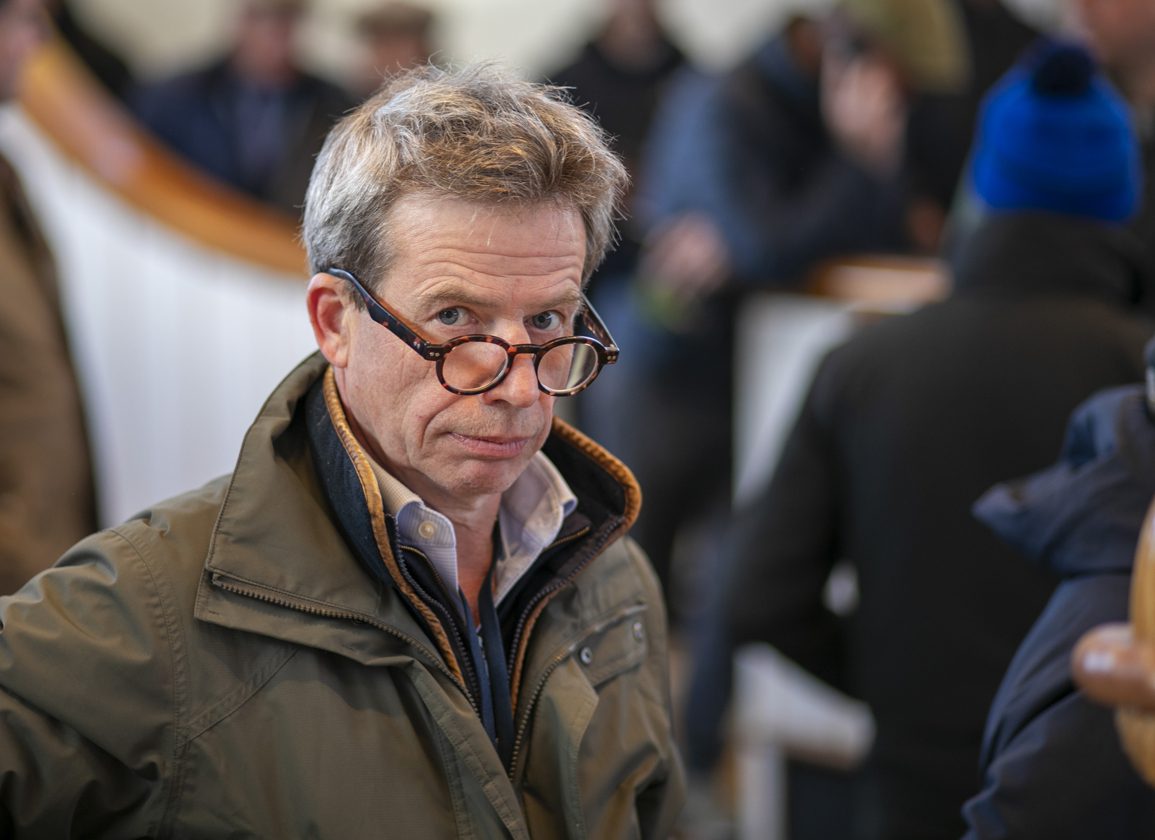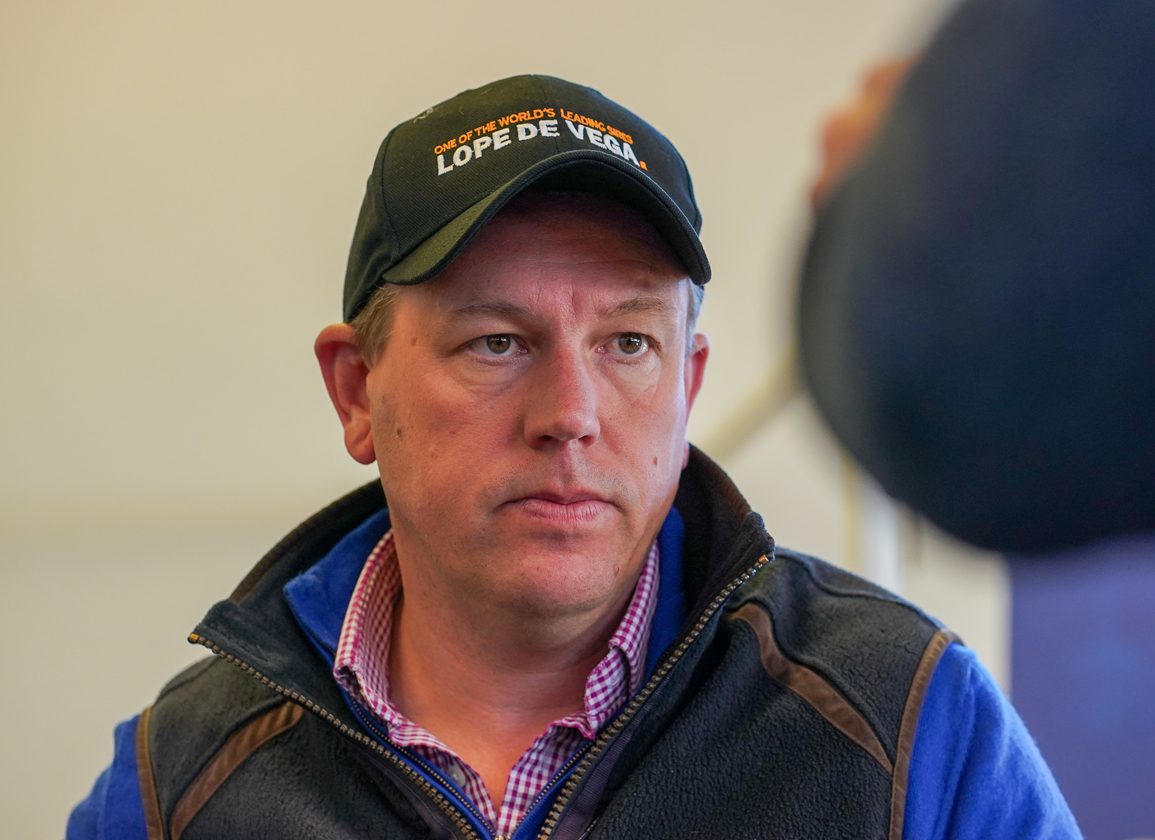By Brian Sheerin
Whether it was Roderic Kavanagh working his magic once again, Katie Walsh clearing seven figures on the only two horses she brought to Park Paddocks or Charlie Poste enjoying a dream debut at the first major breeze-up sale of the year, there were no shortage of feel-good stories to emerge from the Tattersalls Craven Breeze-Up Sale.
However, agent Richard Brown, consignor Mark Grant and trainer Jamie Osborne agreed that, while the top end of the market was arguably stronger than ever, the middle market remained tricky at Tattersalls this week.
It is hard to be exact when crunching the numbers at any sale, not to mention the breeze-ups, which include many layers that need to be factored in. But the early signs are that pinhookers found the going tough at this year's Tattersalls Craven Breeze-Up Sale.
Omitting horses that failed to sell or were bought back at the yearling sales, and running on the basis that it costs £12,000 to get a yearling to the breeze-ups, it is estimated that 28 pinhooks broke even or made profit for their connections on day one.
It appears as though there were 63 genuine pinhooks on day one; 12 of which made a loss, a further 14 that were bought back and nine that were withdrawn. Discounting withdrawals, just 51% of those horses washed their face while some soared into multitudes of their initial outlay.
There were roughly 73 genuine pinhooks on day two. Of the 73, 12 were withdrawn, 17 made a loss and 16 were bought back, leaving just 28 horses turning a profit. A similar story to day one.
The figures illustrated that consignors are working to increasingly tight margins when it comes to ending the year ahead.
All told, 136 of the 147 horses offered at this year's Craven Sale were pinhooks. Excluding the 21 that were withdrawn, just 56 made a profit, meaning 59 of those made a loss or were bought back by their vendors. Should you include withdrawals, just 41% of horses pinhooked for the Craven worked out.
Grant had an up and down week at Tattersalls. He brought five horses to the Craven and, despite getting 160,000gns for a No Nay Never filly who cost 100,000gns less than that at Book 2, he failed to sell a couple and just about got out on the other two.
“It was definitely patchy,” Grant reflected. “If you were ticking the right boxes, you got rewarded but if you fell any way short, you missed out. It was tough. But I think the Craven is always tough. Going to the sale, I thought I had five nice horses and all bar one of them breezed in the top 60 times but I only sold the No Nay Never filly well.”
He added, “The market at the Craven is very different to Doncaster for example. We've had great luck at Donny down through the years and sold a lot of good horses there, including Bradsell (GB) (Tasleet {GB}). The one thing you could say about Donny compared to the Craven is, buyers are a lot more forgiving at Donny. There are more people who buy the 50 to 70 grand horse at Donny whereas at the Craven, if you weren't in the top 25 or 30 on times, they were forgetting about you.”
Doncaster has been as good to Grant as it has to Brown. The Blandford bloodstock agent sourced Bradsell and Perfect Power (Ire) (Ardad {Ire}) at the Goffs Breeze-Up Sale but, unusually, will make his way to Doncaster after drawing a blank at the Craven.
He explained, “The top of the market was obviously stronger than it has ever been before at the Craven. I didn't value some of the top horses as much as what they made but other people did and that's the great thing about a market. I just felt that some of the top horses made a bit much for what they were and then the middle market was patchy. After that, the bottom end of the market was non-existent. It's become very polarised and it's very hard because there are only a small group of horses who qualify. That means a lot of agents end up landing on the same horses at times.”
Asked if he was left frustrated by the lack of business done at the Craven, Brown responded, “You've got to stay true to your values. You know, the joint sale-toppers last year were sold for 625,000gns. This year it was a million with a couple 800,000gns lots and a 600,000gns lot in there as well. Were they that much better than last year? Absolutely not. I couldn't really make sense of it, hence I didn't buy any horses.”
Brown has some of the game's biggest owners on his books. From Sheikh Rashid Dalmook Al Maktoum, for whom he sourced Perfect Power, and more recently the powerhouse that has become Wathnan Racing, the top agent has many orders to fill. Regardless, Brown says that he would prefer to stand firm in his valuations rather than trying to source horses for the sake of filling orders.
He explained, “We never have a set number of horses that we need to buy at the breeze-ups. Obviously we have some orders from a set number of people but it will either happen or it won't and there are still a lot of horses to be sold. If you go into any sale panicking, you make terrible decisions. By the end of the breeze-up season, I am sure we will have sourced roughly the number of horses that we wanted to. But, if the top of the market remains bonkers, maybe we won't buy as many. We'll just have to see.”
Brown added, “I think the breeze-up sales have always been polarised. Perhaps they are slightly more polarised than they ever were before. That seems to be the case in most markets as we saw with the yearling sales last year and certainly the mares' sales as well. We seem to be in that cycle at the moment but it's probably too early to make any strong assessments from the Craven alone. In many ways, Arqana will be the acid test of the market.”
One of the fascinating takeouts from the Craven was the ever-increasing demand for dirt-breds to the Middle Eastern market and beyond. BBA Ireland's Mick Donohoe told TDN Europe earlier in the week that he was shopping at the Craven almost exclusively for horses on behalf of Saudi Arabian interests while leading Dubai-based trainer Bhupat Seemar made his presence felt when snapping up an Improbable colt for 185,000gns.
Fresh from another fruitful spell in that region, Osborne made a splash at Tattersalls in recruiting four American-bred horses that could form part of the Lambourn-based handler's growing string for Dubai.
Outlining his approach to the Craven Sale, Osborne said, “Thankfully I have clients who enjoy running horses in Dubai during the winter and, because of the type of horse we have in our yard, we can only really ply our trade on the turf races out there, where we invariably go head-to-head with Godolphin. This year, we are trying to assemble a more diverse group of horses to go out to Dubai this winter, and we'd like to have a few dirt horses going forward. I think there potentially is a gap in the back-end two-year-old/early-season three-year-old races on dirt in Dubai and that's why we said we'd try to assemble a few of those horses with American pedigrees.”
Osborne ended the week at Tattersalls as the fifth busiest buyer with four new additions to the team at a total cost of 545,000gns. He revealed that he has since added a Practical Joke filly that didn't sell in the ring to his team, bringing that haul to five. All bar one–an Arizona (Ire) colt–boast dirt pedigrees.
Osborne concluded on the market, “I am not just buying for this project and will hopefully be active throughout the breeze-up season. I admire these consignors because, ultimately, they take the risk on whether or not these horses can gallop or not. If they look ordinary, not many people will want them. Getting well paid for the horses who go very well, I think the consignors have a right to do that, because they take a huge amount of risk.
“The breeze-up sales have proven to be a great source of quality horses in the past few years but, if you've got a slow one as a consignor, you've got a slow one. Thankfully, most of the vendors have a good spread of animals so hopefully it will all work out alright for them throughout the season as a whole.”
Not a subscriber? Click here to sign up for the daily PDF or alerts.







